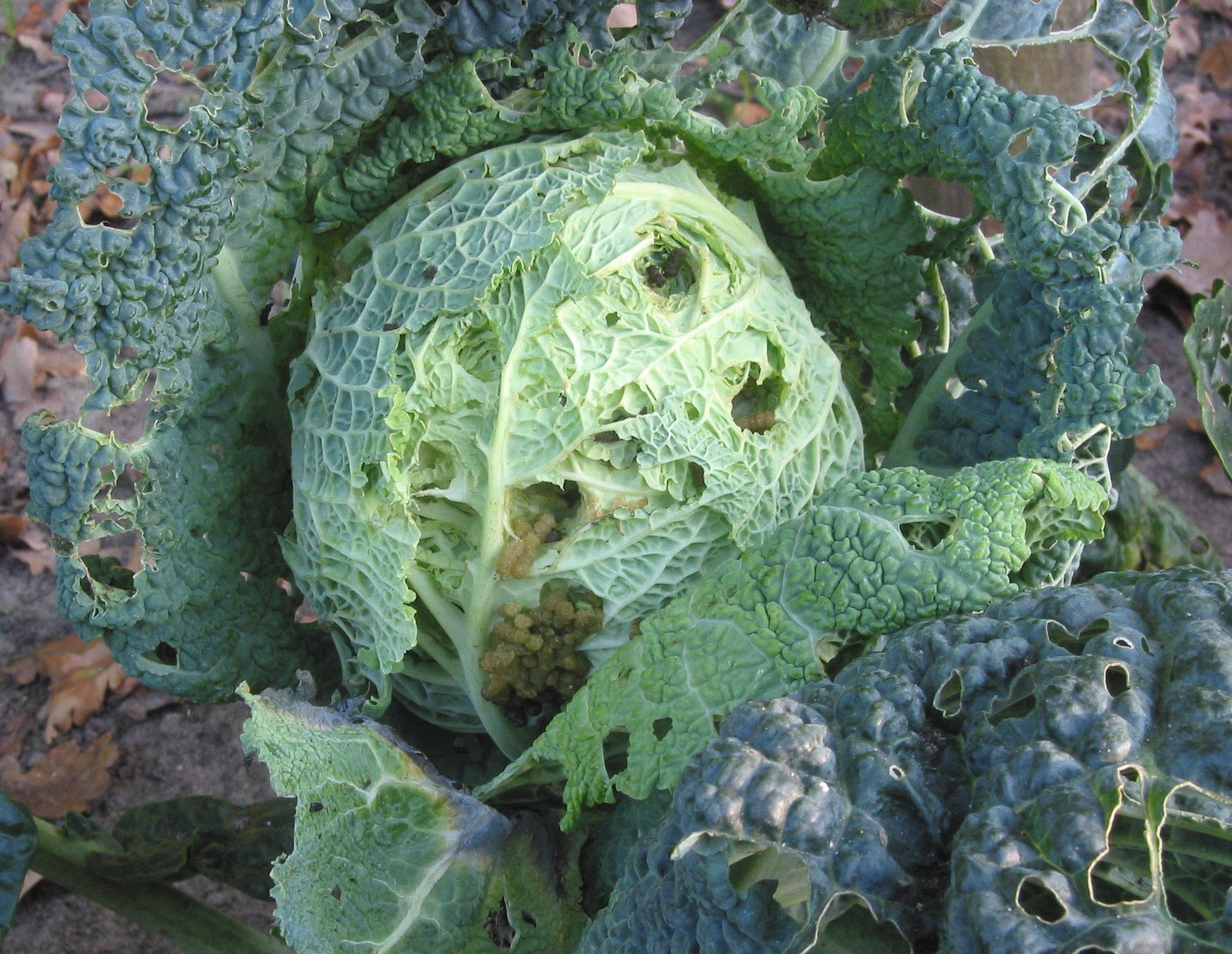By Jason Von Kundra of Sprouting Hope in Marion, VA
When preventative organic methods haven’t sufficed and summer pests have you screaming Lions, Tigers, and Bears! Oh My! It can be challenging to sift through the plethora of information online to find an effective control strategy. The Mexican Bean Beetle, Cabbage Looper and Cucumber Beetle are the most notorious bugs at Sprouting Hope. Learn what to do to keep these pests under control.
Mexican Bean Beetle
This photo shows the life cycle of the beetle from egg to adult. They lay their eggs under the bottom of the leaves making spraying difficult. In the past we have tried squashing them, introducing predators, and using a variety of organic sprays including neem, insecticidal soap, and pyganic. This year we released one thousand parasitic mini-wasps to provide a biological control through a predator-pray relationship. The wasps, Pediobius foveolatus, prey predominately on the bean beetle and occasionally on the cucumber beetle which we will discuss more later. They don’t prey on beneficial natives and they do not over-winter. Learn more about this effective strategy from the New Jersey Beneficial Insect Laboratory. You can order the parasitic wasps from the New Jersey lab by calling 609-530-4192.
Cabbage Loopers
The most effective way to keep your Brassicas protected, or any plant protected, is to cover them to provide a physical barrier but all that row cover can get expensive. The next best option is spraying Bacillus thuringiensis, or commonly known as BT. This bacteria is an organic, biological control that will kill loopers along with other pests but not hurt your bees and other beneficial. The spray is available at most garden stores.
Cucumber Beetles
The cucumber beetle eats tender young leaves and spreads diseases in cucurbits including squash, zucchini, and cucumbers. They are easy to find and spray because they are attracted to the yellow flowers of these plants. Sometimes I can find ten in a single bloom. I typically spray them with pyganic but I know there are several others that work. Another effective strategy is to place yellow sticky traps around the garden. Try making them yourself with yellow water-resistant paper and glue to save money.






This was very informative! I especially liked the photo showing each stage of beetles development. In our garden I too was thinking these were lady bugs and did not want to make the mistake of killing a beneficial Now I am not willing to take the chance, they multiply to quickly! Thanks again for this wonderful post!